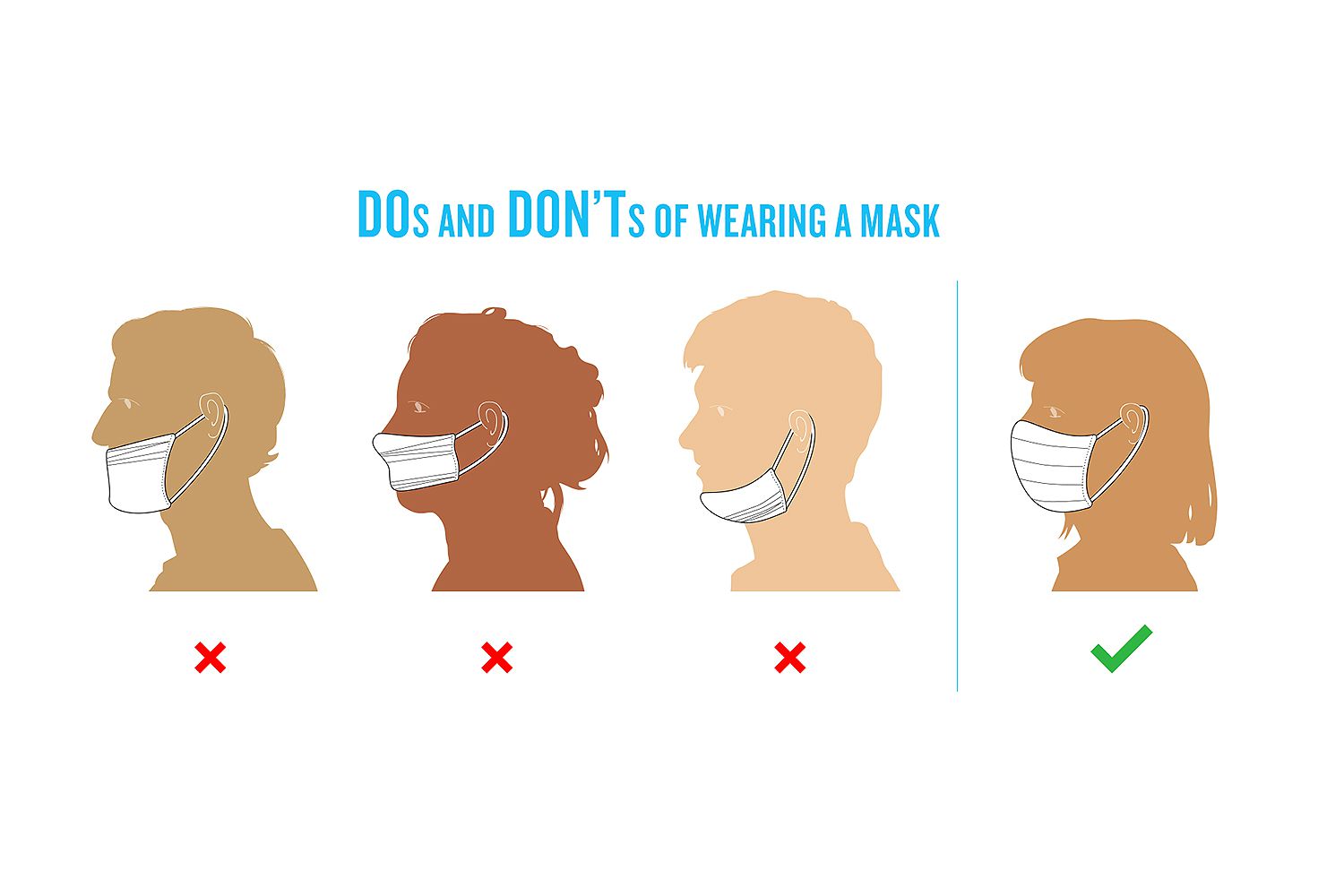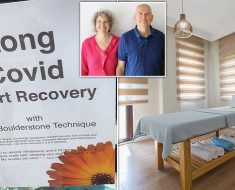
From bandanas to home-sewn masks to plastic shields, face coverings of all kinds can be found on Americans as they go for walks or trips to the grocery store amid the new coronavirus pandemic. On April 3, the Centers for Disease Control advised all Americans to start wearing non-medical face masks while going out in public, in an attempt to slow the spread of COVID-19 after new data showed that up to 50 percent of cases never show symptoms.
While these non-medical masks don’t offer much protection to the wearer from another person’s germs, they do keep the wearer from spreading their own germs — a huge help in reducing the transmission of COVID-19, especially if someone is unaware that they have the virus.
There are, however, right and wrong ways to wear a masks of any kind. The first step is to make sure that the mask is tight to the face.
“Masks should be as closely fitted to the skin as possible,” Dr. Stephen Berger, an infectious disease expert and co-founder of GIDEON, the Global Infectious Diseases and Epidemiology Network, tells PEOPLE.
That means there should not be gaps along the sides of the mask, and it should extend from the bridge of the nose to the chin. It’s especially important that the mask covers not only the mouth, but also the nose — people should not wear them below or at the tip of their nose.
“The nose must be covered,” says Berger. “Note that when people are tested for the virus, a swab is inserted into the nose — because that is where the virus is!”
And for glasses-wearers who are struggling with wearing a mask without fogging up their lenses, Berger suggests adjusting the fit of their mask.
“The mask must be pressed tightly onto the skin under the eyes, but worn loosely under the chin to redirect the flow of exhaled air,” he said.
People should avoid touching and adjusting their mask once they’ve gone outside, or they risk negating the preventive measure of wearing a mask. And they should wash their hands before and after wearing the mask, and remove it once they are home by undoing the ties or loops behind their ears, without touching the front of the mask.
Another important note, says Berger — people should not get a “false sense of security” from wearing a mask.
“Both cloth and paper masks will offer protection against COVID-19, but not 100 percent protection,” he says. “For this reason, we must observe additional precautions such as social distancing and hand washing.”
As information about the coronavirus pandemic rapidly changes, PEOPLE is committed to providing the most recent data in our coverage. Some of the information in this story may have changed after publication. For the latest on COVID-19, readers are encouraged to use online resources from CDC, WHO, and local public health departments. PEOPLE has partnered with GoFundMe to raise money for the COVID-19 Relief Fund, a GoFundMe.org fundraiser to support everything from frontline responders to families in need, as well as organizations helping communities. For more information or to donate, click here.
Source: Read Full Article





